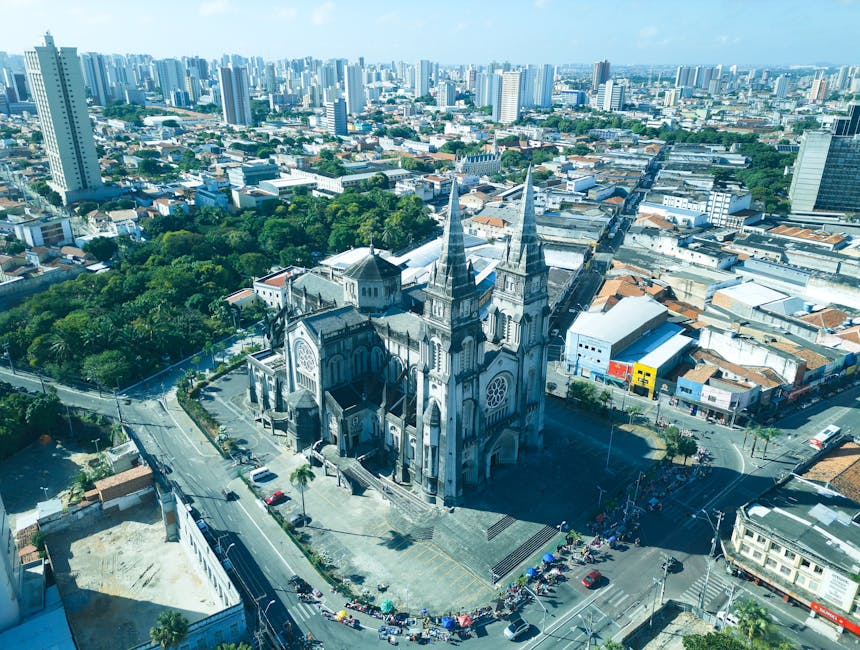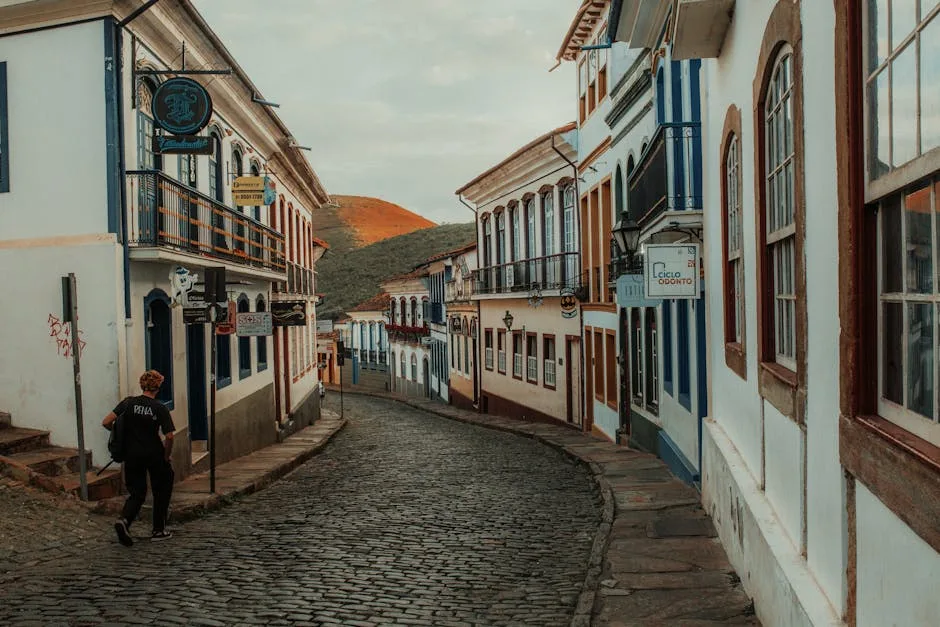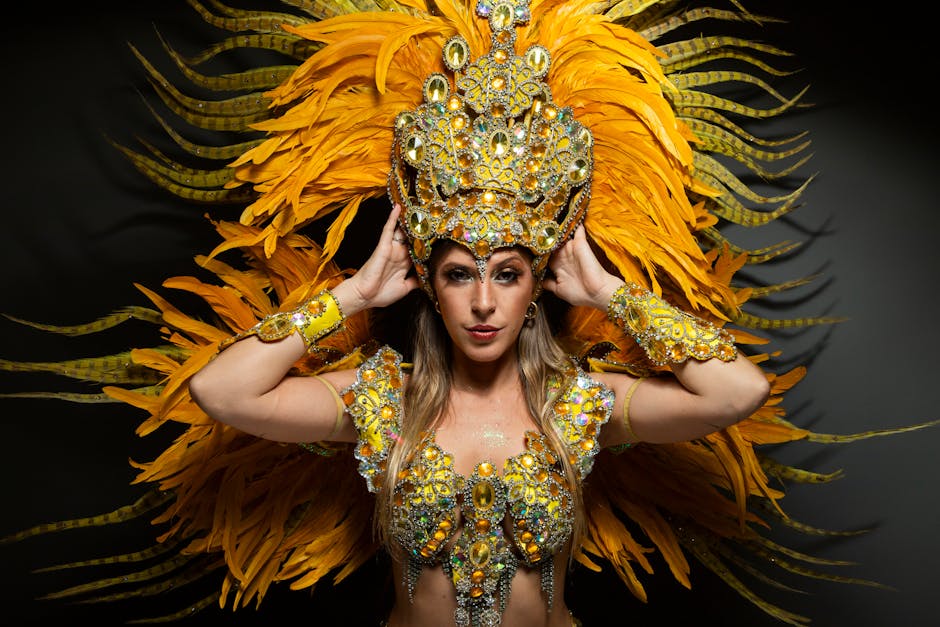- The Enduring Embrace of Popular Catholicism
- More Than Just Churches and Saints
- Candomblé: Roots of Resilience and Reverence
- Echoes of Ancestral Wisdom
- Umbanda: A Truly Brazilian Synthesis
- A Meeting Point of Spirits and Guides
- The Threads That Bind Them: Syncretism and Coexistence
- Embracing Understanding and Respect
brazil is a land of breathtaking landscapes, infectious rhythms, and a warmth that truly captivates. But beneath the surface of its famous Carnival and stunning beaches lies an equally vibrant and complex spiritual landscape. It’s a place where diverse faiths intertwine, dance, and evolve, creating something uniquely brazilian. If you’ve ever been curious about the heart of Brazilian spirituality, you’re in for a treat.
Today, we’re going on a journey to explore three foundational pillars of Brazil’s religious diversity: the deeply rooted African-derived religion of Candomblé, the uniquely Brazilian synthesis known as Umbanda, and the pervasive, yet distinctly local, Popular Catholicism. These traditions, while distinct, often share threads of history, belief, and, most importantly, a profound impact on the nation’s cultural identity. So, grab a cup of coffee (Brazilian, of course!) and let’s dive into this fascinating world.
The Enduring Embrace of Popular Catholicism
When you think of Brazil, Catholicism might be the first religion that comes to mind, given its colonial Portuguese heritage. And you wouldn’t be wrong; a significant portion of the population identifies as Catholic. However, Brazilian Catholicism isn’t always what you might expect from a traditional European perspective. It’s often referred to as ‘Popular Catholicism’ because it’s deeply infused with local flavors, folk beliefs, and a profound sense of personal devotion.
More Than Just Churches and Saints
While grand cathedrals and traditional Masses are certainly a part of the landscape, Popular Catholicism often manifests in more intimate, community-driven ways. Here, devotion isn’t just about Sunday services; it’s a living, breathing practice woven into daily life. Think about:
- Votive Offerings (Promessas): Pilgrims undertaking arduous journeys or making specific sacrifices (like walking on their knees) to fulfill a promise made to a saint or the Virgin Mary in exchange for a miracle or answered prayer.
- Folk Saints: Beyond the official canon, Brazil has its own beloved folk saints, like Padre Cícero in the Northeast, revered by millions as a spiritual guide and miracle worker.
- Processions and Festivities: Religious holidays are often celebrated with vibrant processions, street parties, and elaborate decorations that blend sacred and secular elements, reflecting a joy and communal spirit.
The reverence for figures like Nossa Senhora Aparecida, Brazil’s patron saint, is palpable, drawing millions to her basilica each year. This unique blend of formal doctrine with fervent, personal, and sometimes syncretic practices makes Brazilian Popular Catholicism a powerful force, providing comfort, community, and a sense of belonging for countless individuals.

Candomblé: Roots of Resilience and Reverence
Journeying deeper into Brazil’s spiritual heart, we encounter Candomblé, a religion born from the immense resilience and rich cultural heritage of enslaved Africans brought to Brazil, primarily from West Africa. For centuries, practitioners of Candomblé faced brutal suppression and persecution, yet their faith not only survived but flourished, preserving ancient traditions and beliefs.
Echoes of Ancestral Wisdom
Candomblé is fundamentally an animistic religion, rooted in the worship of Orixás (Orishas), revered deities who represent forces of nature and human qualities. These Orixás, like Olodumare (the supreme creator, who is distant and unknowable), Iemanjá (mother of waters), Ogum (god of war and iron), or Oxum (goddess of beauty and fresh waters), are not abstract concepts but living presences who interact with the world and humanity.
Central to Candomblé are its terreiros (temples or houses of worship), led by respected spiritual leaders, often women known as Mães de Santo (Mothers of Saints) or Pais de Santo (Fathers of Saints). Within these sacred spaces, rituals unfold that are mesmerizing and deeply meaningful:
- Sacred Drumming and Dance: Rhythmic drumming and specific dances are used to invoke the Orixás, allowing them to descend and temporarily possess their initiated children (mediums).
- Offerings: Food, flowers, and other items are offered to honor the Orixás, establishing a sacred exchange and demonstrating devotion.
- Initiation and Community: Becoming a ‘child of Orixá’ involves a rigorous initiation process, fostering a profound connection to the Orixá and the Candomblé community, which often functions as an extended family.
Candomblé is not just a religion; it’s a way of life that emphasizes connection to nature, respect for elders and ancestors, and the preservation of African cultural identity. Its vibrant rituals and strong community bonds stand as a testament to the enduring spirit of a people.
Umbanda: A Truly Brazilian Synthesis
While Candomblé maintains a strong connection to its African roots, Umbanda emerges as a fascinating, distinctly Brazilian spiritual tradition. Born in the early 20th century, particularly around Rio de Janeiro, Umbanda is a beautiful synthesis, blending elements of African traditions (like Orixá worship), European Spiritism (Kardecism), and indigenous Brazilian beliefs, all filtered through a lens of Catholicism.
A Meeting Point of Spirits and Guides
Umbanda is often called ‘white magic’ due to its emphasis on charity, healing, and moral evolution. While it acknowledges Orixás (often adapting their stories and attributes to fit its own theological framework), its practices heavily involve direct communication with a diverse pantheon of spiritual entities:
- Caboclos: Spirits of Indigenous Brazilians, representing strength, wisdom, and connection to the land.
- Pretos Velhos: Spirits of enslaved Africans, embodying humility, wisdom, and patience, offering comfort and guidance.
- Crianças: Child spirits, representing innocence, joy, and playfulness, often bringing lightheartedness to rituals.
- Exus and Pombagiras: Often misunderstood, these are guardian spirits who work on the crossroads, dealing with earthly matters and protecting the community, but are distinct from their Candomblé counterparts.
In Umbanda centers, known as terreiros or tendis, mediums enter trance states to channel these spirits, who then offer advice, perform healings, and deliver messages to those seeking help. The atmosphere is often one of profound respect, warmth, and collective healing. Practitioners typically dress in white, symbolizing peace and purity, and rituals involve drumming, singing, prayer, and the use of candles, herbs, and flowers.
Umbanda’s ethical framework stresses charity, self-improvement, and understanding, making it a powerful spiritual path for many Brazilians who seek a direct connection with the divine and practical guidance for life’s challenges.

The Threads That Bind Them: Syncretism and Coexistence
You might be wondering how these distinct traditions can coexist, and even blend. The answer lies in a phenomenon called syncretism – the merging of different religious beliefs and practices. In Brazil, this isn’t just a historical curiosity; it’s a living, breathing reality that has shaped the spiritual landscape.
During the colonial era, enslaved Africans were often forced to adopt Catholicism. To preserve their own faiths, they cleverly associated their Orixás with Catholic saints. For instance:
- Iemanjá, the African goddess of the sea, became associated with Nossa Senhora da Conceição (Our Lady of Conception) or Stella Maris.
- Ogum, the Orixá of iron, war, and technology, found his counterpart in Saint George or Saint Anthony.
- Oxum, the Orixá of fresh waters, beauty, and gold, was often linked to Nossa Senhora da Candeias or Nossa Senhora Aparecida.
This wasn’t merely superficial; it created a profound, layered spirituality where one figure could hold multiple meanings simultaneously. Today, many Brazilians might identify as Catholic but also seek guidance from a Mãe de Santo or visit an Umbanda terreiro. This religious fluidity, the ability to navigate between different spiritual systems, is a hallmark of Brazilian identity. It speaks to a deep cultural openness and a pragmatic approach to faith, seeking spiritual solace and support wherever it can be found.
Embracing Understanding and Respect
The journey through Candomblé, Umbanda, and Popular Catholicism reveals a Brazil that is far more complex and fascinating than meets the eye. It’s a country where faith is vibrant, personal, and deeply intertwined with history, culture, and social identity. These traditions, born from struggle, adaptation, and profound belief, offer unique perspectives on the divine, humanity, and our place in the world.
Understanding this religious diversity isn’t just about learning facts; it’s about appreciating the resilience of the human spirit, the beauty of cultural exchange, and the rich tapestry that makes Brazil truly unique. It encourages us to look beyond conventional definitions of religion and embrace the multifaceted ways in which people connect with the sacred. So, the next time you think of Brazil, remember not just its beaches and samba, but also the profound spiritual currents that flow through its very soul.





